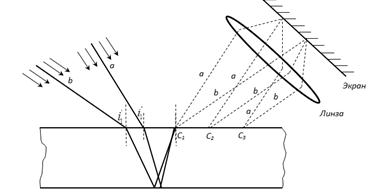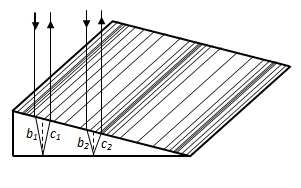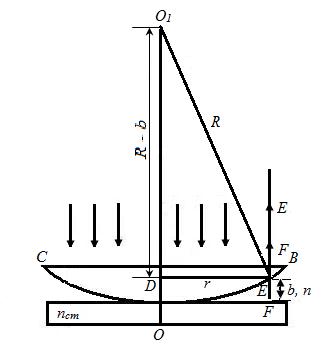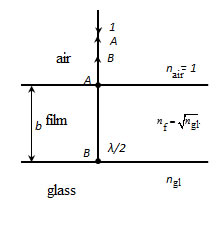main
To the list of lectures
|
OPTICS
The amplitude of the resulting oscillation at a given point is given by
Initial phase
If the phase difference
where n - refractive index shows how many times the speed of light in a vacuum (the speed of light c = 3 ? 108 m/s), more than the speed of light in a given medium – vph - the phase velocity. The intensity of the wave I is proportional to the square of the amplitude I ~ A2, hence
because If I1 = I2, then Imax =4I1, Imin =0, ie will be a redistribution of intensity (energy) waves in space. Redistribution of light flux in space, in which at some points there are maximums and minimums in other intensity is called interference. A necessary condition for the interference of waves is their coherence. However, due to the transverse electromagnetic waves their coherence condition is not sufficient to produce an interference pattern. Necessary, in coherence to vibrations vectorsCoherent are monochromatic waves - unlimited in space of one specific wavelength and strictly constant frequency. Because no real power does not strictly monochromatic light, the waves emitted by any source of light other than a laser, are incoherent. Therefore, the experiment did not observe the interference of light from independent sources of light, such as the two bulbs. §2 The interference of light in thin plane-plates
The incident wave is partially reflected (∼5°) from the upper surface of the plate (beam 1) and partially refracted (beam AO). Refracted wave, reaching the bottom of the plate, and partially reflected (ray ОС), and partially refracted (beam 2'). The same thing happens on the upper surface of the plate at the point with the ray ОС, and the refracted wave (beam 2) is superimposed to the wave directly reflected from the top surface (beam 1). These two waves are coherent. The result of the interference depends on the Δ - optical path difference. The path difference acquired by the beams 1 and 2 before they meet in that C is
In geometrical optics, we know the law of refraction
of trigonometry
Then
In calculating the phase difference Δφ between oscillations in the beams 1 and 2 need besides the optical path difference Δ into account the phase change on reflection in p. A Since in p. A that there is a reflection from the interface between the optically less dense medium to an optically denser medium (n2 >n1, because nglass> 1), the phase of the wave changes in A on π. In that reflection occurs on the boundary between the media, the optically denser medium to an optically less dense, so that the phase change in p. O not occurs. Thus, the phase change in p. A can be accounted for by adding to Δ (or subtracted from) the half wavelength in a vacuum - λ / 2. Then, finally
§ 3 Constant inclination fringes.
They say that the constant inclination fringes is localized at infinity, because for their observation needs screen located in the focal plane of the lens. (In the focal plane parallel rays incident on the lens, going to a point.) Example inclination fringes - hologram on travel tickets, labels, etc. 2. Fringes of constant thickness. Assume that the plate thickness is not constant (~ b, n = const). Then in all the places of the plate, where the thickness b, and, hence, the path difference Δ are the same, there is one and the same result of the interference. This means that along some dark or light interference fringe formed on the surface, the thickness of the plates is the same.
3. Newton's rings.
Find the radius of Newton's rings r. The optical path difference between the rays reflected from the top and bottom of the gap is
λ/2 accounts for the phase shift on π by reflection from an optically denser medium in point F. From the triangle О1DЕ follows
Then
radius of Newton's rings for the reflected light.
radius of Newton's rings for transmitted light. 4. Coated optics. The possibility of reducing the reflected light from the interference in thin films are widely used in modern optical devices (cameras, binoculars, periscopes, etc.). To do this on the front surface of the available lenses and prisms are applied in a thin transparent film, the absolute refractive index nf less nlens. The film thickness is chosen in such a way that carried out the interference minimum reflection for light with λ = 5.5 • 10-7 m, corresponding to the maximum sensitivity of the human eye (green). Such optics called coated. In reflected light, coated lenses appear colored in purple, as they are noticeably reflect only red and blue-violet light.The most complete mutual extinction of the light waves reflected from the top and bottom surfaces of the coated film on the lens, is the case of equality of the intensities of these waves, ie, with approximate equality reflection coefficients. When i1 = 0
Therefore, the optimal value nf
The minimum thickness of the film is from the condition Δ:
bmin at k = 0
|











